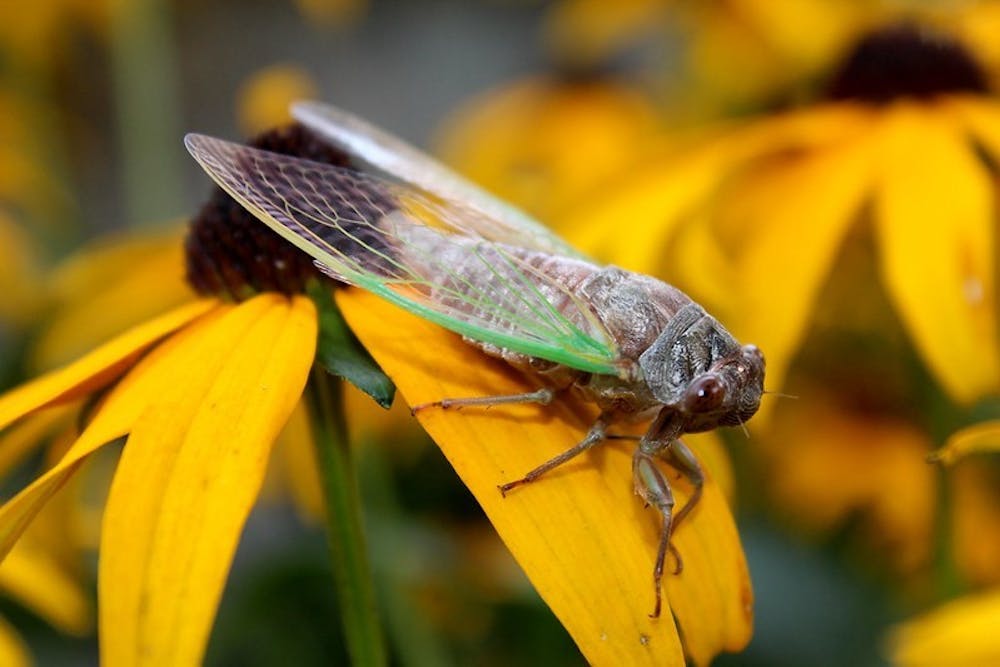Billions of Brood X cicadas have emerged in Bloomington over the past two weeks.
IU Sophomore Hassaan Khan said he noticed the cicadas right away when driving into campus two weeks ago. Khan said he saw the most cicadas in the Southeast neighborhood, such as by Forest and Spruce.
“In some places, the majority of the sidewalk is covered in cicadas, and it’s a little unsettling,” Khan said.
Roger Hangarter, IU professor of biology and creator of the film “Return of the 17-Year Cicadas,” said some of the cicadas that have emerged are infected with a fungus called Massospora cicadina. They have a white segment filled with a fungus where their lower abdomen and genitals should be.
The fungus has chemicals that are hallucinogenic and alter the behavior of the cicadas. The infected cicadas become more aggressive at mating, and infected male cicadas can imitate female cicada behavior to attract other males, spreading the fungus further, according to NPR.
“I’ve seen pictures of males who are missing half of their abdomen from the fungus, and they are still trying to mate with females,” Hangarter said.
Hangarter said the fungus occurs naturally and has been documented in many cicada broods. It also causes the infected cicadas to die prematurely.
Adult cicadas that aren’t infected with the fungus can live for about two weeks above ground. Some cicadas are still emerging from the ground, while others have already mated and died, Hangarter said.
Male cicadas make a buzzing sound and group with other males in the trees so that their calls are loud enough to attract female cicadas, Hangarter said.
Female cicadas have an easier time locating the male cicadas’ mating call when it’s coming from an isolated tree rather than in dense forests. Male cicadas usually prefer a tree in an open field rather than a tree deep in the woods, Hangarter said.
IU Junior Nitesh Naren, who lives off-campus, said his porch and backyard are covered with cicadas.
“It can get annoying,” Naren said. “It sounds like white noise turned all the way up.”
Cicadas prefer dry environments and don’t do well in wet soil, such as near lakes, Hangarter said. Many trees on campus are infested with Brood X cicadas. Hangarter said he’d seen the most cicadas in the IU Tailgating Field next to Memorial Stadium.
IU senior Samea Chaudhry said that going into some parts of campus was scary because it felt like she was walking into an infestation. She said she saw the most cicadas near the IMU and Woodburn Hall.
“Whenever I’m on campus, I run through the areas that have cicadas,” Chaudhry said. “I probably look so embarrassing.”
The Brood X cicadas will likely be around until early July, and their eggs will hatch in August, Hangarter said. The newly born cicadas will break through their shells, fall to the ground and then bury themselves for another 17 years.
CORRECTION: A previous version of this story spelled Roger Hangarter's name wrong. The IDS regrets this error.





